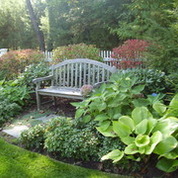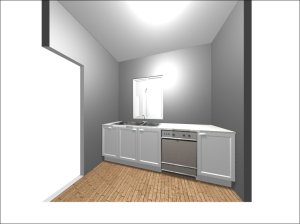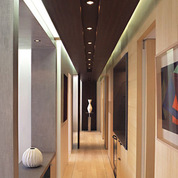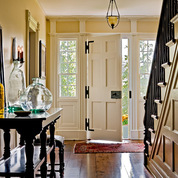This post is specially for ‘Happy Laughs’, ‘House by the Water’ and the other overseas bloggers whose projects I follow and who are following mine.
Reading about all the wonderful house builds and renovations taking place in Australia and the States, I’ve become aware of the different vocabularies we use sometimes and thought it might be fun to start a building ‘glossary’.
For my part, I have learned a few things from House by the Water. Early on, I became a little confused by the emphasis Jo was placing on her kitchen benches. In South Africa we use the word ‘bench’ to describe something we sit on. A bench can be an elongated stool, with no backrest and no upholstery, that can seat several people at once. It can also be a garden bench which might have a wooden slatted back rest or a wrought iron one.
The only time ‘bench’ is used to describe a work surface is in terms of a ‘work bench’ in a wood working studio. It is never used to describe the tops of kitchen cabinets. We call those ‘counter tops.’ Until reading one of the earlier posts in ‘House by the Water’ I had never heard the word bench used for work surfaces in a kitchen. Once I’d figured that out, I could easily understand why Johanne was giving the matter so much thought.
In a more recent post, I learned from ‘House by the Water’ that to have a ‘sticky beak’ was to have a look around a place, and not, as I first thought, to pop in for a casual cup of tea or coffee and something sweet and ‘sticky’ to eat….
In my post about Fountains and Fireplaces, I mentioned that we’d found an interesting fireplace manufacturer out in the ‘veld’ and ‘House by the Water’ responded that she was off to look up the word ‘veld’. Veld refers to open fields and uncultivated farmland. I think in Australia you’d call it the ‘bush’. And I suspect in the States you might say ‘the country’. We also use the expression ‘the bush’ in South Africa but more specifically when we’re referring to an area where there are wild animals as opposed to farm ones. Often, when planning a holiday in the Kruger National Park or a similar game reserve, we might say we’re going to ‘the bush’.
The word ‘veld’ is an Afrikaans one, derived from Dutch which was spoken by many of the earliest European settlers in this country.
I was finally prompted to write this when I had a question from ‘Happy Laughs’ in Texas earlier this week asking what a ‘scullery’ is and for the first time I realised that I had never heard the word in the States and I’d never actually seen a scullery there either. So perhaps it is a word and concept that hails from Britain. To be absolutely certain, I looked it up in my trusty Oxford English Dictionary and this is what it says:
A scullery is a small kitchen or room at the back of a house used for washing dishes and other dirty household work.
It’s origin is late Middle English (denoting the department of a household concerned with kitchen utensils): from Old French esculerie.
So it’s a dishwashing space, separate from the laundry which is specifically for washing clothes and household linens.
In our new home there will be a ceramic ‘butler’s sink’ in the main part of the kitchen. I will be able to fill the kettle from there and also, if I wish, wash glasses or only slightly used crockery. In the scullery, which will be separated from the main kitchen by a door, I plan to have a far more utilitarian sort of stainless steel kitchen sink with a draining board on either side. Here I will be able to wash or soak bigger items like pots and pans, the roasting tray, baking trays (cookie trays) etc. The dishwasher will be to one side of the sink. Having a scullery simply means you can get used crockery and cookware out of sight even though you might not have the time to load it into the dishwasher immediately.
Sink is another confusing one. In South Africa and Britain we use the word ‘sink’ only in kitchens, laundries and sculleries. In bathrooms we use the word ‘basin’. And on the subject of bathrooms, what Americans call the ‘powder room’ we call the ‘guest loo’ or ‘guest toilet.’ Back in the 1970ties when I was an exchange student in Alabama, someone suggested that I pre-shrink new dress fabric in the ‘lavatory’. This led to considerable confusion and not a little embarrassment. The word ‘lavatory’ was even then quite archaic in South Africa and had only ever been used to describe a toilet. I had never heard it in the context of a sink or basin until then and have never heard it used in that context since. Of course it is derived from the Latin, ‘laver’ to wash so perhaps I should have been quicker to make the connection.
Other words related to houses which have different meanings are ‘pavement’ which is what we use in place of ‘sidewalk’ and ‘yard’ and ‘hall’.
I’m not sure about Australia, but I know that in the States you might refer to your ‘yard’ as being all the property surrounding your house, including garden areas. In South Africa a yard is very specifically the space outside your kitchen door where you might keep your refuse bins and where you’re likely to have an outside washing line. The yard is almost always paved in brick, cement or tiles. The rest of the property is referred to as being the garden, even if there is not much in it.
In the States you use the word ‘hall’ for an area we call a ‘passage’. The word ‘hall’ in England and South Africa refers to a large room such as one that is attached to a church for special functions. Our schools all have ‘halls’ for morning assembly, school plays etc. In bigger buildings like schools, we might call passages ‘corridors’ but never halls.
In South African homes, the ‘hall’ is very specifically the area immediately inside the front door where you might leave your coat, your car keys etc. In other words, it’s the reception area of a private house.
I know in the States it is quite usual for visitors to come in through the back or kitchen door. This is very unusual here where we use our front doors almost all the time. Our back doors are usually out of sight and sometimes inaccessible to visitors since they often open into walled yards.
Which brings me to ‘Mud Rooms’. I’m not sure where I first learned about mud rooms. It might have been in British home décor magazines and I have since come across them on all sorts of American decorating sites. I think they are a fabulous idea and would have loved to have had one but space was something of a problem, so I’m going to have to make do with my little laundry leading into the garage instead. They are creeping into new South African homes, I think, but they’re still a fairly new concept. This is not a country with extremes of climate; we do not often wear Wellington boots and we never need snow gear, but still, there is something awfully appealing to me about this concept.
And lastly, for now, I learned something new from Houzz just a few days ago when I looked for photographs of ‘stable doors.’ Our new house is going to have a stable front door. Needless to say, when I looked for stable doors on Houzz, that is exactly what I found, doors opening into stables housing horses….. Somewhere along the line, the words ‘Dutch Doors’ popped up and I realised that what we call ‘stable doors’ here are called ‘Dutch Doors’ in America.
Given all our Dutch heritage in this country, I’m quite surprised we don’t call them Dutch doors too, but I had never heard them described that way before. I look forward to hearing what they’re called Down Under…






Super subject for a blog, Jacqui. Now, what really fascinates me is how the inhabitants of those former English-speaking colonies chose such divergent descriptions for the same or very similar ordinary household furniture and fittings, when the language of their forefathers all originated in Great Britian (or less occasionally Europe). You will have to read Bill Bryson’s entertaining “At Home” whose entire contents revolve around the origin of these different lexicons. Bryson has lived part of his life in the USA, Australia and England. Enjoy the building, and keep up the entertaining blogs.
Hi Ian. Yes, fascinated as I am by both words and building, this is a good topic for me and one that might still expand. I’ve thought of a few more ‘differences’ even since posting this. Like the noun ‘bath’ as opposed to ‘tub’, for instance. I have read all Bill Bryson’s books but should perhaps reread ‘At Home’ now that I’m so involved in the subject.
I can see that you’re right into this, Jacqui! In Aussie, ‘yard’ is everything around the house (front and back yard), ‘footpath’ is pavement (although M insists on calling it ‘sidewalk’ for reasons unknown to me), ‘hall(way)’ is passage (similar function to SA houses). I’ve never come across sculleries or mud rooms, and expect that these are luxuries that space does not generally permit. Our ‘laundry’, you may recall, is recessed into a .68cm deep X 1.2m wide space in our kitchen, and accommodates the washing machine and tub. A tumble dryer could be hung over the washing machine, but we’ve managed to do without so far, having previously got by with the ‘Hills Hoist’ and, more recently, using a foldaway washing line mounted on the wall next to the BBQ.
Hi Rose! Does this mean you’ve resurfaced from East Timor or wherever it was you were diving? Yes, space is always a big issue. Juliet has a great ‘laundry cupboard’ in London. And there’s another word we use differently from the Americans. They use ‘closet’ when describing what we call cupboards. And my sister in England refers to her laundry as the ‘utility room’ which is probably another way of saying ‘mud room.’ She also has a ‘hoist’ drying rack which I think is extremely useful and I might look for one here for what are becoming our very damp summers. We’re looking forward to seeing you fairly soon. Then you can visit the building site in person rather than on paper…
Yes, we’re back and looking ahead to Sept. Will email you.
Snap! I have also been looking at glossaries this week, preparing a fun quiz of building terms for my next post. I thought also of our intercontinental terminology differences, but I have enough trouble just understanding Australian home building language, so I decided to limit my research. Thank you for this post. I do enjoy our language sharing banter, but not as much as the transfer of our ideas and stories about the construction process.
So interesting that you’re thinking along the same lines! My absolute best discovery so far has been ‘sticky beak’. I wonder where on earth that originated?
Ohhhh this made me smile…. It took me awhile to figure out bench too. I love the idea of a scullery. So practical. Very much like the mud room. I was very adamant that we have a mud room separate from our laundry room. My laundry room will be messy. I want to be able to shut the door when company is over. Much like the scullery.
And how interesting about the meaning of yard for you…. we are planning to have a Dutch door from my mud room to the hall so if needed dogs can sleep in the mudroom but we can still hear them.
In Canada we call the laundry room the utility room. My kids use some Canadian words and it makes me happy to hear it. :). In Canada we use the word washroom for restroom. I dropped that very quickly because no one had a clue what I was talking about. 😳 Thanks for this fun and informative post. And your scullery is going to look great.
What a great post! I love figuring out some of the different words used by bloggers in various countries–such fun for a writer! I love “sticky beak.” Here in the states, real estate agents call people who just come in to look around “looky-Lous.”